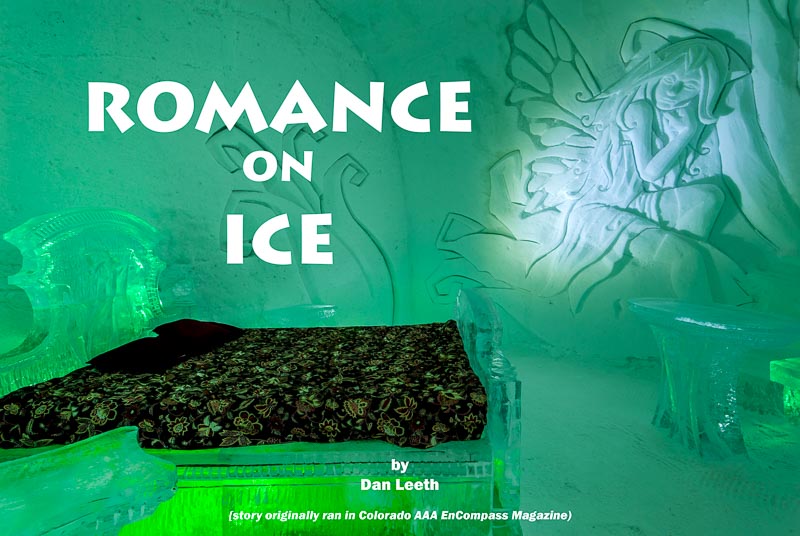
Québec City Provides a Dreamy Retreat in the Dead of Winter
Maybe it’s because I grew up beneath the sweltering Arizona sun, but I find myself irrepressibly drawn to cold places. Give me frosty air and a few flakes on the ground, and I’m as happy as a penguin on ice. When it comes time to treat my wife, Dianne, to a romantic, midwinter getaway, I book a return visit to Québec City.
Founded a dozen years before the Pilgrims hit Plymouth Rock, Old Québec City’s stone walls enclose a downtown filled with picturesque shops, pubs, churches, restaurants, hostelries and residential row houses. French is the language with English freely spoken, albeit with a syrupy accent. And being Canadian, folks here are friendly and polite. Here, we can enjoy Euro-flair with less time in the air.
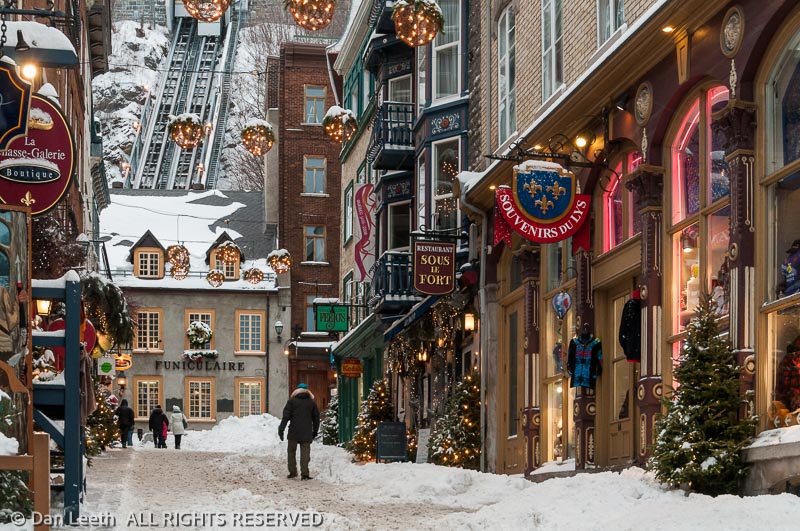
The Québécois don’t let the cold get them down. The town remains fully functional in winter. Vendors still sell art in outdoor galleries, horse-drawn carriages still clomp up cobblestone streets and sidewalk cafes still offer alfresco lunches. Best of all, it’s a place my heat-hating spouse truly enjoys visiting.
“Fantastic!” Dianne exclaims, “as long as we can stay in the Frontenac.”
Chateau Frontenac, now a Fairmont Hotel, stands as the structural icon of Québec City. It was built in the 1890s by the Canadian Pacific Railroad to lure clients into luxury travel by train. With turrets and towers reminiscent of the Middle Ages, the 611-room edifice looks like a fairytale castle at the edge of the bluffs above the Saint Lawrence River. One almost expects to see Tinker Bell fluttering about.
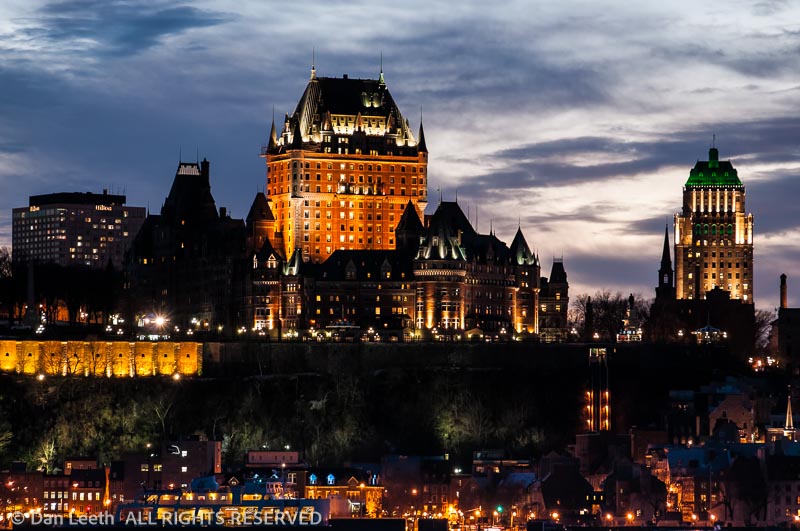
“We’ll have a few nights at the Chateau,” I assure my mate, “but I’ve got an even more romantic surprise for the last night of our trip.”
We arrive at the Chateau Frontenac and check in. I’m looking forward to sharing an amorous first night’s dinner with my lovely at the hotel’s Restaurant Champlain, but those plans quickly evaporate.
“Where’s the best place around here to get poutine?” Dianne asks the concierge.
Invented in Québec, poutine is a Canadian specialty, which like ketchup-flavored potato chips, is seldom seen south of the 49th parallel. It consists of French-fried potatoes topped with cheese curds and smothered in gravy. The saturated fat content alone would make a cardiologist wince, but that doesn’t bother my dining partner, a 30-year nurse. She’s so fond of the dish, she even uses a photo of poutine as the desktop background on her computer.
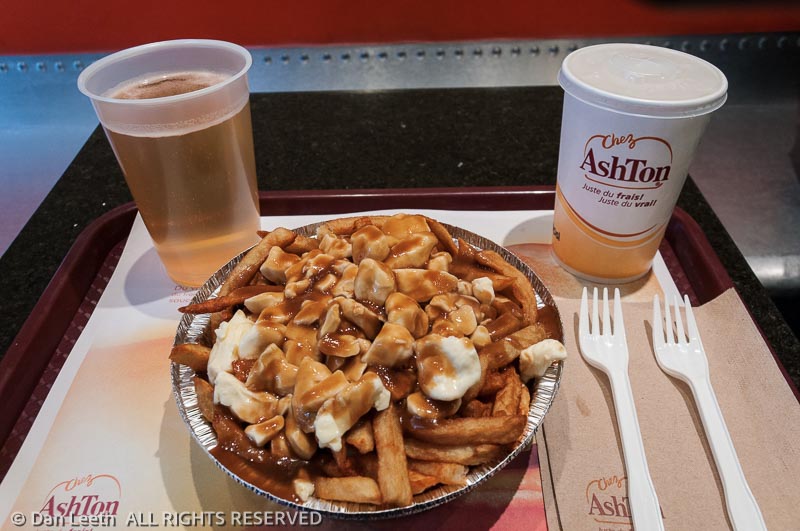
“Chez Ashton has the best poutine by far,” the concierge claims, handing her a map with this mecca of malevolent nutrition circled. Instead of china and stemware, we eat dinner from aluminum pie plates at what could pass as a French-Canadian version of Chipotle’s. Fortunately, they sell beer.
“Thank you!” Dianne coos as we depart, arm in arm.
Last time we came to Québec City, we packed skis and drove to the Charlevoix region to slide the slopes of the Le Massif Ski area. This time, I’m taking my ski-free honey to Charlevoix by train.
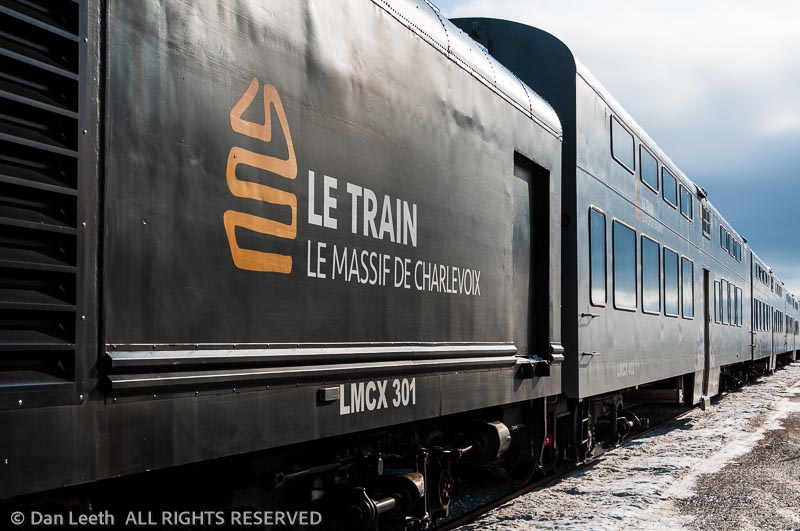
Le Massif and Le Train le Massif de Charlevoix are owned by Daniel Gauthier, who along with Guy Laliberté founded Cirque du Soleil. After selling his interest in the circus, Gauthier bought the ski area and reestablished the rail route along the banks of the Saint Lawrence River.
We board near Montmorency Falls, a 272-foot-high chunk of ice that’s one and a half times higher than Niagara. Climbers arrive with ropes and packs presumably filled with warm clothes. It’s five degrees Fahrenheit outside with fog and falling flakes giving the setting a dreamy look.
Inside the railcars, 11-foot ceilings and panoramic windows offer an airy feel. We share a table for four with a French-Canadian couple celebrating a birthday. They speak limited English and we have even more limited French.
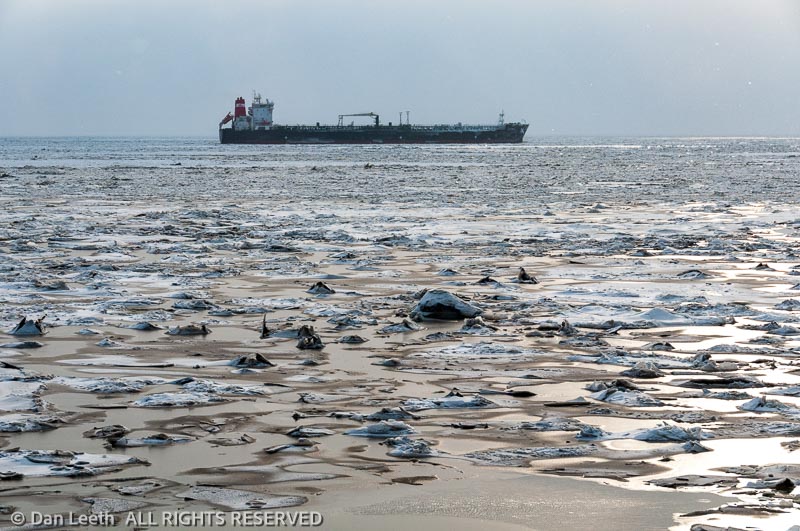
The rails follow the Saint Lawrence River as it heads for the sea. With snow covering the banks and chunks of blackened ice floating in on its slate gray surface, the monochromatic view through the window resembles an Ansel Adams black-and-white photograph. We spot buoys in the channel, and the occasional ship slowly making its way through the bitter current.
We leave the train in the village of Baie-Saint-Paul where the depot shares space with a hotel, also owned by Gauthier. The outside temperature has warmed to six degrees and the sun threatens to emerge from behind the slate gray clouds. These, we agree, are perfect conditions for a walk into town. As we wander through gift shops and stroll around art galleries, one thing becomes abundantly clear. Charlevoix residents are proud of their region.
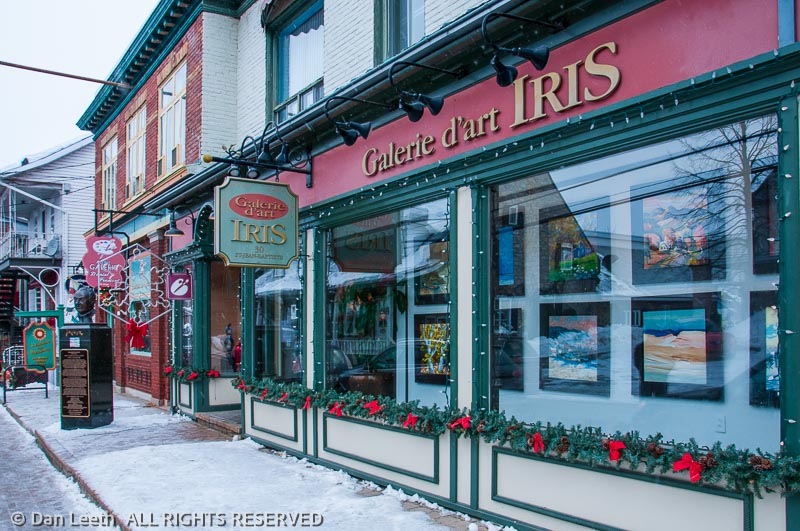
“The birthplace for tourism in Canada is here,” touts Jean Poirier, director of Eco & Motion Charlevoix. “Tourism started 400 years ago when people from high society decided to leave their main country and visit our colony.”
We return to the hotel for lunch before our afternoon departure back to Québec City. Dianne is devastated when she discovers the hotel restaurant doesn’t serve poutine.
The next morning, we at least get to enjoy breakfast in the Champlain. Outside, a wave of warmth has hit town, pushing temperatures up to a sizzling 24 degrees Fahrenheit. Braving the heat, we go out for a hand-in-hand walk down the Terrasse Dufferin, the wooden boardwalk overlooking the river.
The Chateau Frontenac pokes into a gray sky, its new copper-colored roof replacing its patina-green predecessor. Near the hotel, a sloping, wooden Toboggan track rises from the boardwalk. Men armed with snow blowers and shovels remove the previous night’s snow from its twin tracks. Patrons will soon hurdle down the icy slide at speeds reaching 60 mph. Two ships ply the river, one going up channel and the other heading down. The ice floating in the river, I notice, is moving upstream. While the water here is fresh, Québec sits close enough to the ocean that the river backs up with the tide.

At a snack shack near the toboggan run, a vendor prepares tire d’êrables, maple taffy. After heating maple sap until it has a consistency between syrup and butter, he ladles it in strips onto fresh snow where it rapidly cools. Before it totally hardens, patrons wind the sugary mass onto a stick and eat it like a Popsicle. Dianne loves them. Next to poutine, tire d’êrables are her favorite Canadian vice.
From there, we take the town’s European-style funicular down the cliffs to Basse-Ville, the lower section of Old Québec City. Here, we wander the pedestrian-only Rue du Petit-Champlain, which looks like a Christmas village lined with bistros and boutiques. Not content to leave her credit card untouched, Dianne buys a warm, Nepalese knit sweater to add to her clothing layer options. I suggest she test it out tonight on the water.
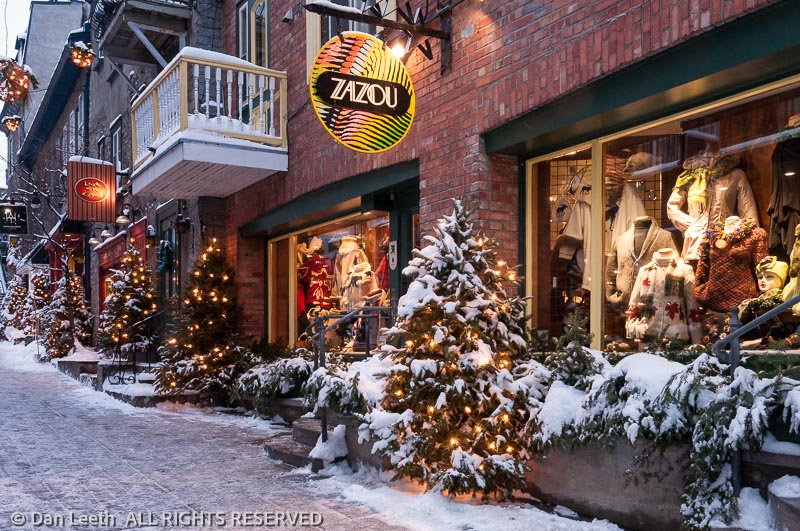
After dinner, we board the M/F Alphonse-Desjardins for a 15-minute ferry ride across the Saint Lawrence to the town of Lévis on the opposite bank. The river looks like a frozen margarita, its surface covered in broken ice and slush. We join a handful of passengers inside where an accordion player entertains for tips. The ferry’s engines fire up and the boat departs, the crunch of ice tearing at its hull. It feels positively Titanic-like.
“We’ve got to do it,” I smile at my costar-in-life.
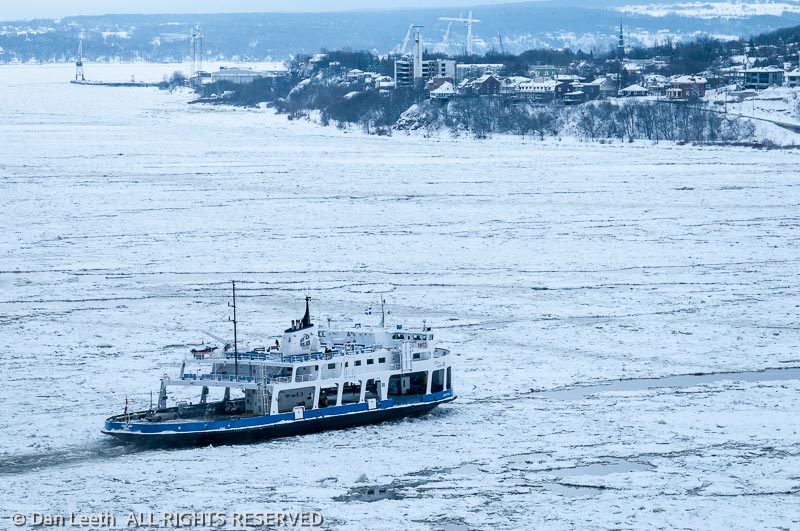
Together, Dianne and I walk to the deck, and in the biting cold wind, we perform our best arm-in-arm imitation of Jack and Rose on the bow of that ill-fated ship. The YouTube clip of their “I’m Flying” scene lasts 30 seconds. Ours ends in less than half that time.
We catch the next ferry back. Across the river, the Québec City skyline rises above the cliffs in a montage of shape and color. Below, shops of the lower town paint a band along the waterline. Between them stretch the illuminated ramparts where red flashes from gun turrets simulate cannons being fired at our invading ferry. Downstream, the Image Mill’s projected lights transform a bank of grain elevators into a ground-hugging interpretation of the aurora borealis. Like the dance band on the Titanic, our accordion player plays through it all.
Beyond poutine, Québec City offers an array of fine dining options. One night we head to Restaurant Toast!, a gourmet tapas eatery whose name reflects something one does with champagne glasses, not bread. At Restaurant Aux Anciens Canadiens, we dine on traditional French-Canadian dishes served by a staff dressed in historic attire.
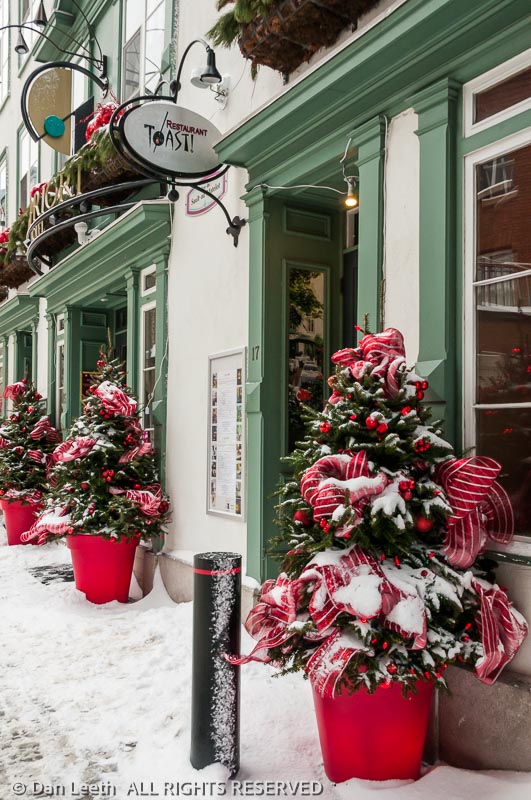
For our final night’s meal, I follow a local recommendation and make reservations at Nordic-themed Chez Boulay. To get there, I prearrange a romantic ride in a one-horse open carriage. We meet our driver, Willie, and his horse Fred in the square outside the hotel. With the mercury congealing at zero, his was the only carriage around.
“Sorry to make you come out on a night like this,” I apologize.
“Don’t worry,” the driver tells us. “I have another ride scheduled for 8:00 tonight.”
Snuggling beneath thick woolen blankets, we begin a slow ride through the streets of Old Town. Illuminated signs paint shops, lamplight streams from undraped windows and moonlight softly tints banks of street-side snow. Fred clomps along while Willie provides a narrative of the town’s history.
After a dinner of seared salmon, we take our overnight bags, hale a very warm taxi and head to our final night’s lodging, Hôtel de Glace – Québec’s Eskimo-worthy Ice Hotel built entirely from ice and snow.
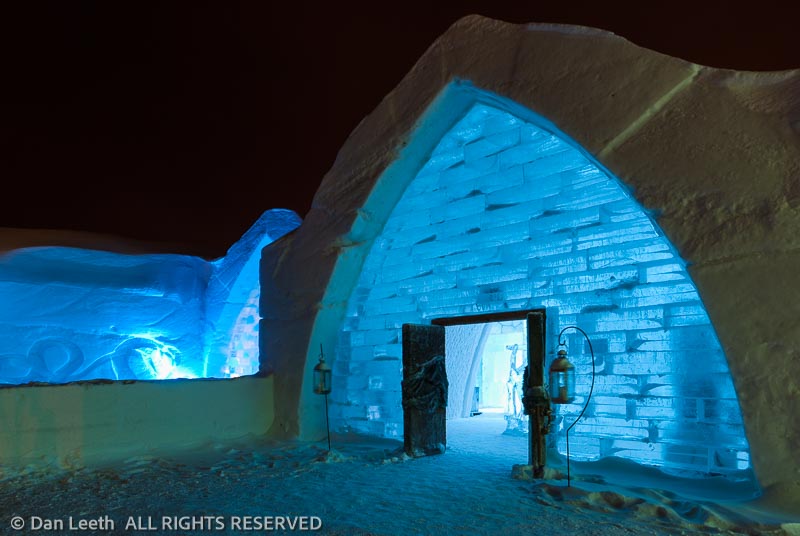
Reconstructed annually, the frozen structure begins with super-saturated snow blown onto molds to form what look like a series of gothic-arched Quonset huts. The blocks of translucent ice enclosing the ends allow sunlight to shimmer in by day and colored lights out at night. The effect appears vividly surreal.
The hotel boasts a chapel with pews made from sheets of crystal ice. Imaginative ice sculptures grace the Grand Hall next door. A passageway leads to the Ice Bar where drinks served in hollowed ice come in the rocks, not on the rocks. Around the corner patrons can sit and slip down the icy spiral of the Grand Slide.
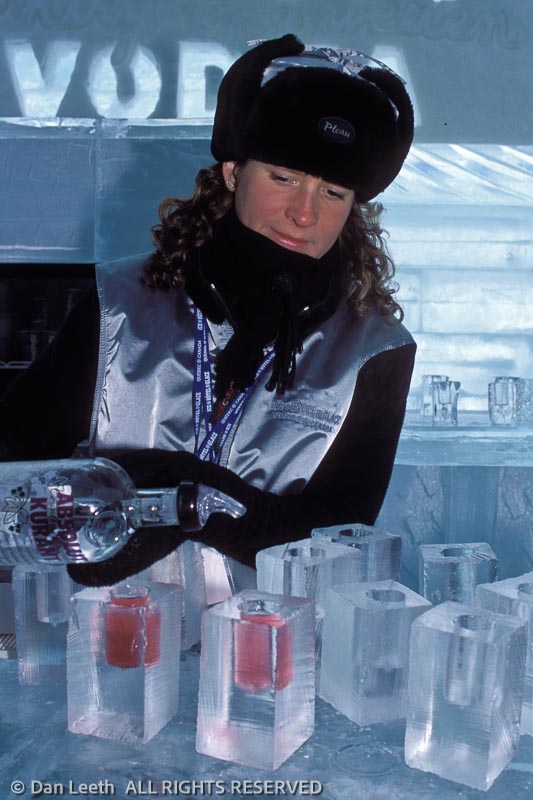
The hotel’s 40+ overnight rooms come in two styles. Some are simple, entry-level quarters with snowy, unadorned walls, ideal for folks who believe that all rooms look the same when you turn the lights out. It’s the “theme suites” that draw visitors to the Ice Hotel and provide this French-Canadian institution’sraison d’être.
More than a dozen artists transform a select number of rooms into frigid works of art. They carve elaborate bas-relief sculptures into the snowy walls and decorate the floor with furniture crafted from blocks of pure ice. Banks of colored lights transform these rooms into a fantasia of pure delight.
Themes, which vary year-to-year, may include anything from flowers and forests to mountain climbers and polar bears. Ours is the Perce-Neige (Snowdrop) suite, named for a snow-piercing plant that blooms in late winter. A white spotlight in the green-lit room highlights a winged fairy maiden emerging from a blossom on one wall. Her halter-topped countertop adorns the opposite with oversize flowers gracing the remaining surfaces. We have a bed frame made from sculpted ice along with an icy love seat, table and two nightstands.
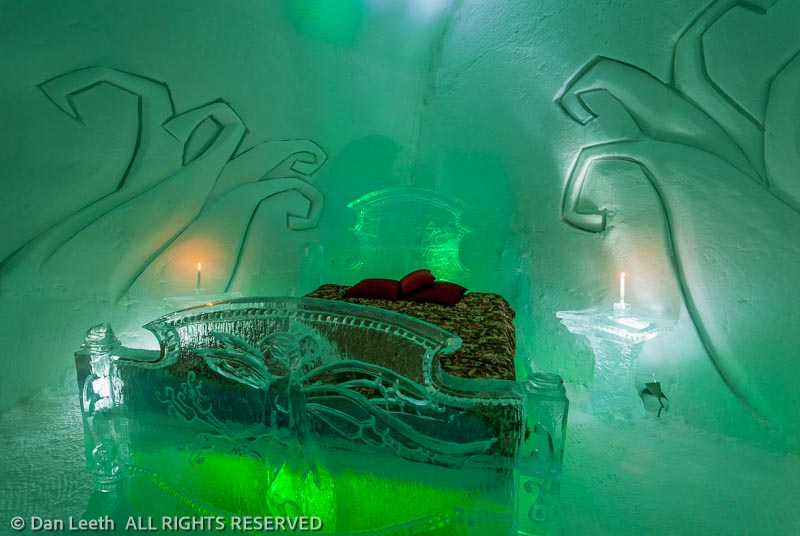
Every year, close to 100,000 folks pay to tour the hotel, but only about 5,000 of us annually brave a night in rooms devoid of heat and indoor plumbing. Overnight guests attend a mandatory orientation held in the heated pavilion building adjacent to the icy complex.
“Do you have any worries about sleeping at Hôtel de Glace?” night guide Sophie Vaillancourt asks as we join the gathering.
“No,” my wife answers. “We’re from Colorado.”
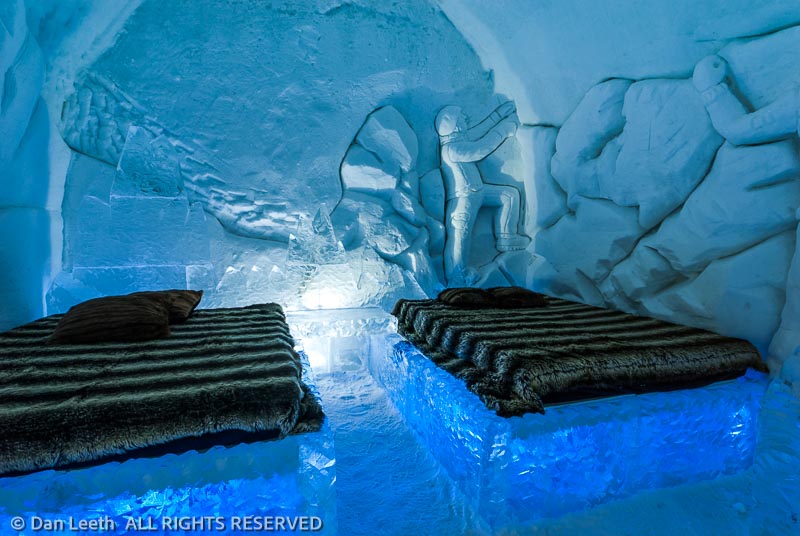
Many of our fellow guests, some with children, hail from warm climates where snow is seldom seen. Sophie assures everyone that even though it’s minus 10 degrees Fahrenheit outside, the insulating snow will keep our quarters a toasty 25 inside. She explains how to get into and out of the provided sleeping bags, which she claims are rated to minus 20 Fahrenheit.
“You will survive,” she assures all. “You will have a great night of sleep.”
Electronics and cell phones, however, will die in the cold. She advises everyone to leave anything we don’t absolutely need in heated lockers.
“A lady from South America had a gorgeous pair of boots,” Sophie recounts. “In the morning when she tried to grab them from the floor, they were stuck to the snow. We had to use a hairdryer to free the boots so she could put them back on.”
With the Ice Hotel sporting three outdoor hot tubs, a simmering soak before slumber seems like a splendid idea. We don swimwear, grab robes and race to one of the pools, which we share with two Canadian sisters who say they’re there for adventure. Tomorrow, they’re going to go dogsledding and maybe try snowshoeing.

Another couple from Jackson, Mississippi, joins us. They’ve come with their daughter and son-in-law because overnighting in the Ice Hotel was on his bucket list of things to do.
We’re here, I tell the group, because we think that enduring a subfreezing night ensconced in snow, curled up in individual mummy bags and trying to fall asleep on a thin mattress set atop a frigid slab of ice is downright romantic.
“You know, a bungalow in Bora Bora would be romantic, too,” Dianne blurts, her hair frosted white by steam from the tub.
“You wouldn’t like it,” I remind her. “They don’t sell poutine there.”
